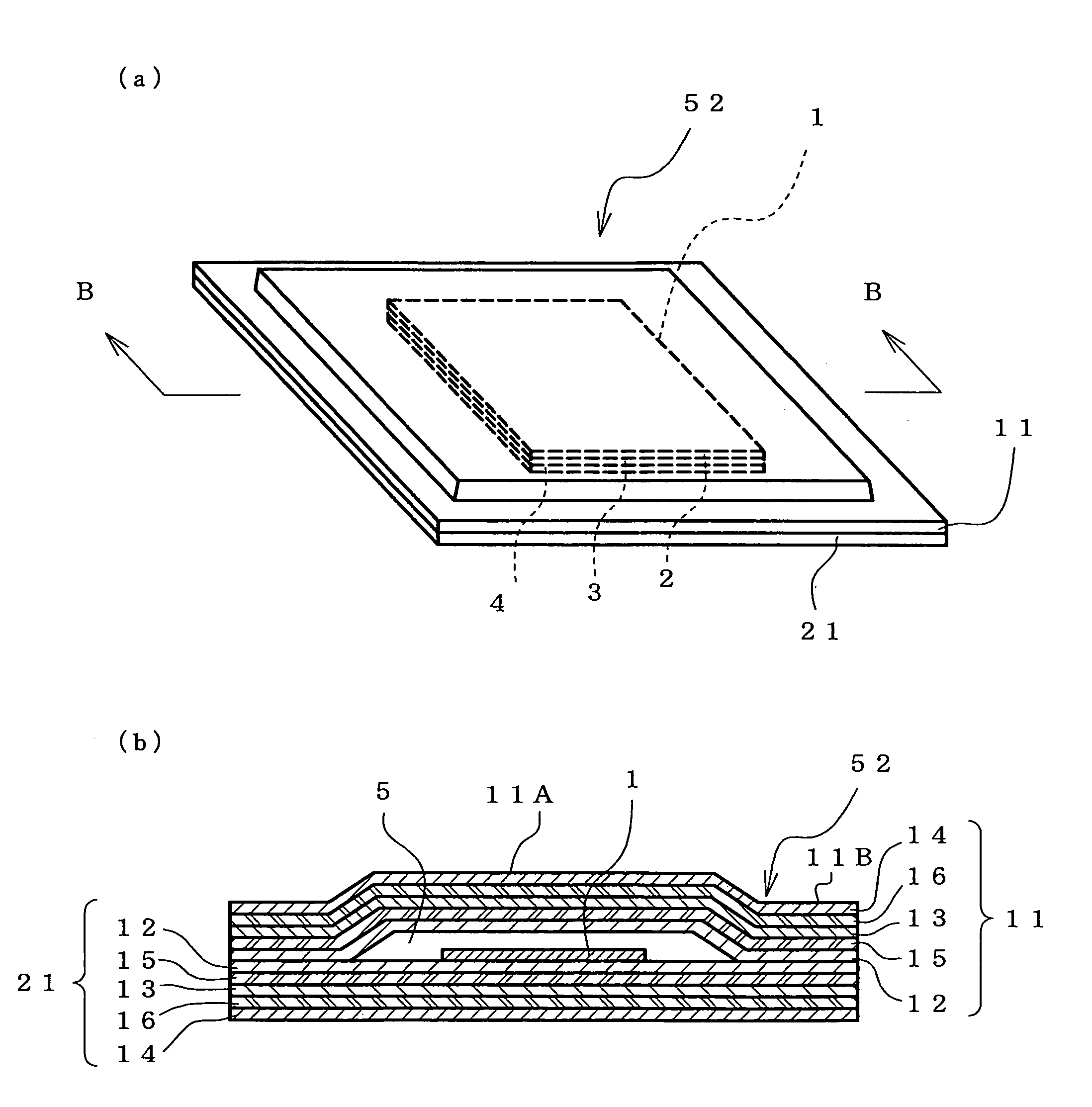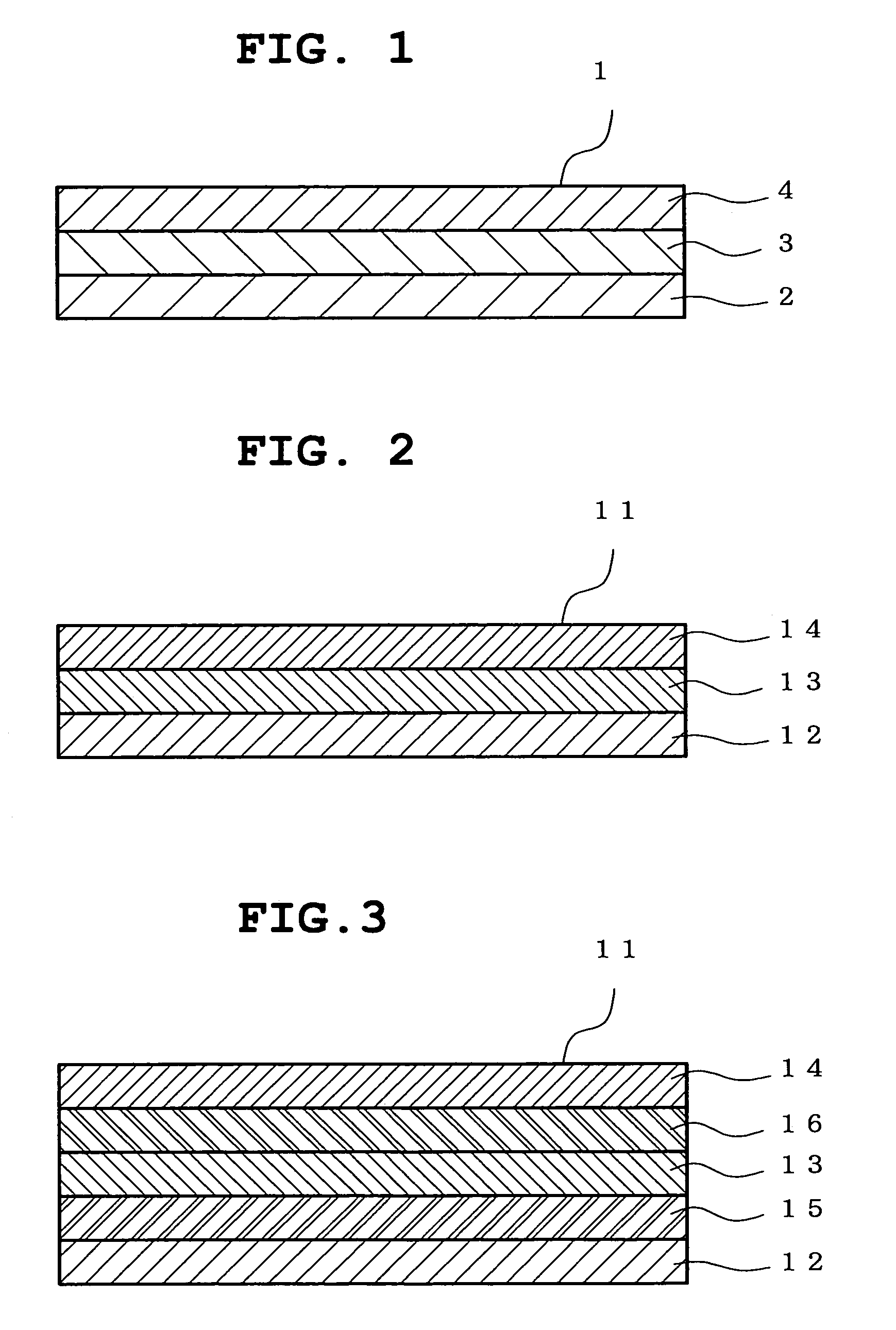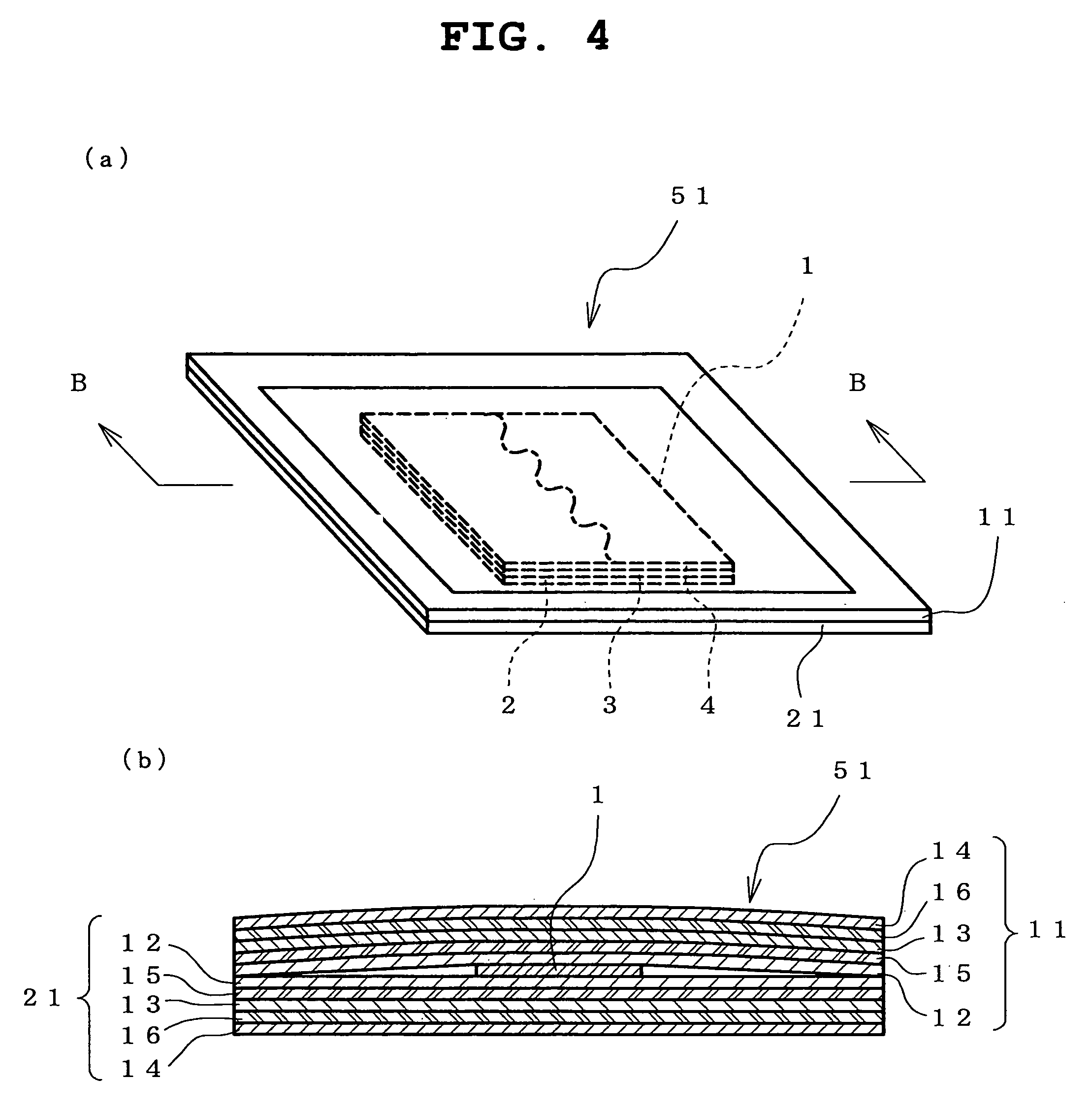Patch package structure
a packaging and patch technology, applied in the field of patch package structure, can solve the problems of patch quality being susceptible to environmental influences, patch content being easily affected, patch content being reduced, etc., and achieves the effect of reducing the melting point of an acrylonitrile resin layer, reducing the melting point, and adding rigidity
- Summary
- Abstract
- Description
- Claims
- Application Information
AI Technical Summary
Benefits of technology
Problems solved by technology
Method used
Image
Examples
example 1
[0099]A sheet was produced by laminating 12 μm-thick PET film / 9 μm-thick AL foil / 20 μm-thick LDPE film / 30 μm-thick water-absorbing layer A / 10 μm-thick LDPE film / 30 μm-thick PAN film by dry lamination. The 20 μm-thick LDPE film / 30 μm-thick water-absorbing layer A / 10 μm-thick LDPE film was laminated by coextrusion inflation.
[0100]The sheet was cut into a 65 mm×65 mm about rectangle to give a first package. Similarly, moreover, the sheet was cut into a 65 mm×65 mm about rectangle to give a second package. The PAN surfaces of the first package and the second package were directly faced against each other, the patch prepared above, which was free of a physiologically active ingredient, was placed approximately in the center between them, and the periphery of each package was heat sealed such that the packages were substantially flat planes to give a patch package structure shown in FIG. 4.
example 2
[0102]In the same manner as in Example 1 except that a sheet free of 20 μm-thick LDPE film / 30 μm-thick water-absorbing layer A / 10 μm-thick LDPE film was used for the second package, a patch package structure was completed.
example 3
[0104]As the first package, the first package produced in Example 1 was prepared. Separately, a sheet was obtained by laminating 12 μm-thick PET film / 80 μm-thick AL foil / 30 μm-thick PAN film by dry lamination, a pocket was formed on the PAN film side, and the sheet was processed into a 65 mm×65 mm (flat plane size) about rectangle to give a second package container. A patch was placed in a pocket of the second package container, the aforementioned first package was placed as a lid on the second package such that the PAN film came closer to the patch, and the periphery thereof and the non-pocket part (periphery) of the second package were heat sealed to complete a patch package structure. Such patch package structure is different from the embodiment shown in FIG. 4, since the second package is a container and the first package is a sheet (flat plane).
PUM
| Property | Measurement | Unit |
|---|---|---|
| thickness | aaaaa | aaaaa |
| thickness | aaaaa | aaaaa |
| temperature | aaaaa | aaaaa |
Abstract
Description
Claims
Application Information
 Login to View More
Login to View More - R&D
- Intellectual Property
- Life Sciences
- Materials
- Tech Scout
- Unparalleled Data Quality
- Higher Quality Content
- 60% Fewer Hallucinations
Browse by: Latest US Patents, China's latest patents, Technical Efficacy Thesaurus, Application Domain, Technology Topic, Popular Technical Reports.
© 2025 PatSnap. All rights reserved.Legal|Privacy policy|Modern Slavery Act Transparency Statement|Sitemap|About US| Contact US: help@patsnap.com



